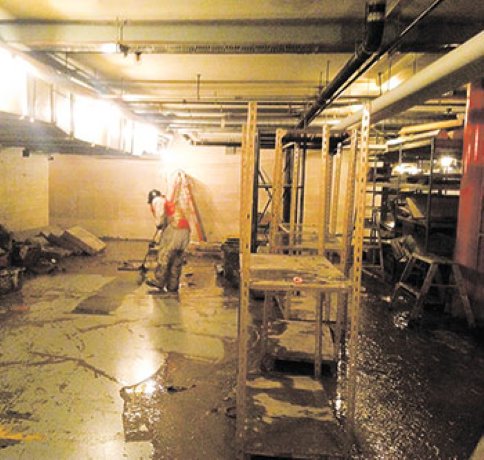The City of Calgary is in the early stages of developing a comprehensive disaster and resiliency plan to mitigate the future flooding risks to buildings and the delivery of essential services.
“In the recovery phase of the flood, we focused on getting people back into buildings and to help them be more productive,” said Grant Sommerfeld, manager of facilities for corporate properties & buildings with the City of Calgary.
“We have spent many weeks in this phase and are not quite out of the woods yet. But, while we were doing the rebuilding work, there were some obvious steps we could take to reduce the risk from flooding.”
For the city, the term flood resilience refers to the ability of various departments to cope with and to recover from flooding at a property, neighbourhood and the city level.
During the initial phases of flood recovery in June, Sommerfeld said simple measures were taken to reduce risk to city-owned assets.
For example, three electrical panels were moved from the basement to the third floor of a building. Also, the fuel lines for an emergency generator were connected to a tank on the thirteenth floor of a building, instead of a tank in the basement.
“However, as we started moving closer to the end of the recovery program, we decided to take a systematic look at what the risks are,” said Sommerfeld.
“We started by looking at the buildings that suffered damage and then we looked at historic flood maps and identified buildings that could have suffered damage if the flood had been more serious.”
Once this process was completed, Sommerfeld developed a list of buildings that were considered to be at risk.
“Then, we put together a small team and went through each and every building,” he said. “We assessed the threats and opportunities.”
The team looked at all the areas that were a potential risk for water getting into or penetrating a building from street level and adjacent utility bunkers.
In addition, they made a list of what would get damaged if water does get into the building.
From this perspective, any equipment or machinery that is below grade was threatened.
In a separate process, the comprehensive review determined what the space in each building was used for and how many people were working in these spaces.
At this level of assessment, the buildings were prioritized by the level of risk.
For example, a building might be classified as high risk because the structure is large and has hundreds of employees like the Municipal Complex. The assessment considers the cost of displacing a large number of workers.
Or, a building may be high risk because it houses a mission critical service such as an emergency call centre for 911 and the main public transit office.
All this information was put into an Excel spreadsheet and a document which outlined the risk profile for city-owned buildings in Calgary was produced.
“From there, we went to the market and hired an engineer to do a review of our report, as well as on-site inspections,” said Sommerfeld.
“We are in the process of that right now. The end result of the review will be a prioritized list of what needs to be done, by building an estimate of what it would cost.”
It is very difficult to speculate as to what all this will cost, but Sommerfeld said the resiliency plan is intended to start this discussion.
“Now, we can ask: how much risk are we willing to take,” he said. “Do we take baby steps or major steps toward the elimination of any and all risks?”
In the end, Sommerfeld’s report will be submitted to the administration and potentially council, where the political leadership will decide how far the city will go to mitigate flood risks.
However, finding an answer to these questions is based on the current risk of flood, which is becoming more difficult to calculate because it may be changing.
“Climate change is clearly affecting the frequency of this type of event,” said Sommerfeld.
“We have historical data on floods, but we don’t know how relevant it is, due to apparent changing climate patterns.”
According to a study commissioned by Alberta Transportation in 2001, there is a continuous record of the Bow River in Calgary from 1911. But, the three largest known floods all occurred before 1911, in 1879, 1897 and 1902. The fourth highest flood in Calgary happened in 1932.
Since 1932, there had been no storms of any significance causing flooding until 2005 and 2013.
Sommerfeld said the next step in the resiliency plan is to develop a delivery plan, which will involve doing some preliminary design work.



Recent Comments
comments for this post are closed